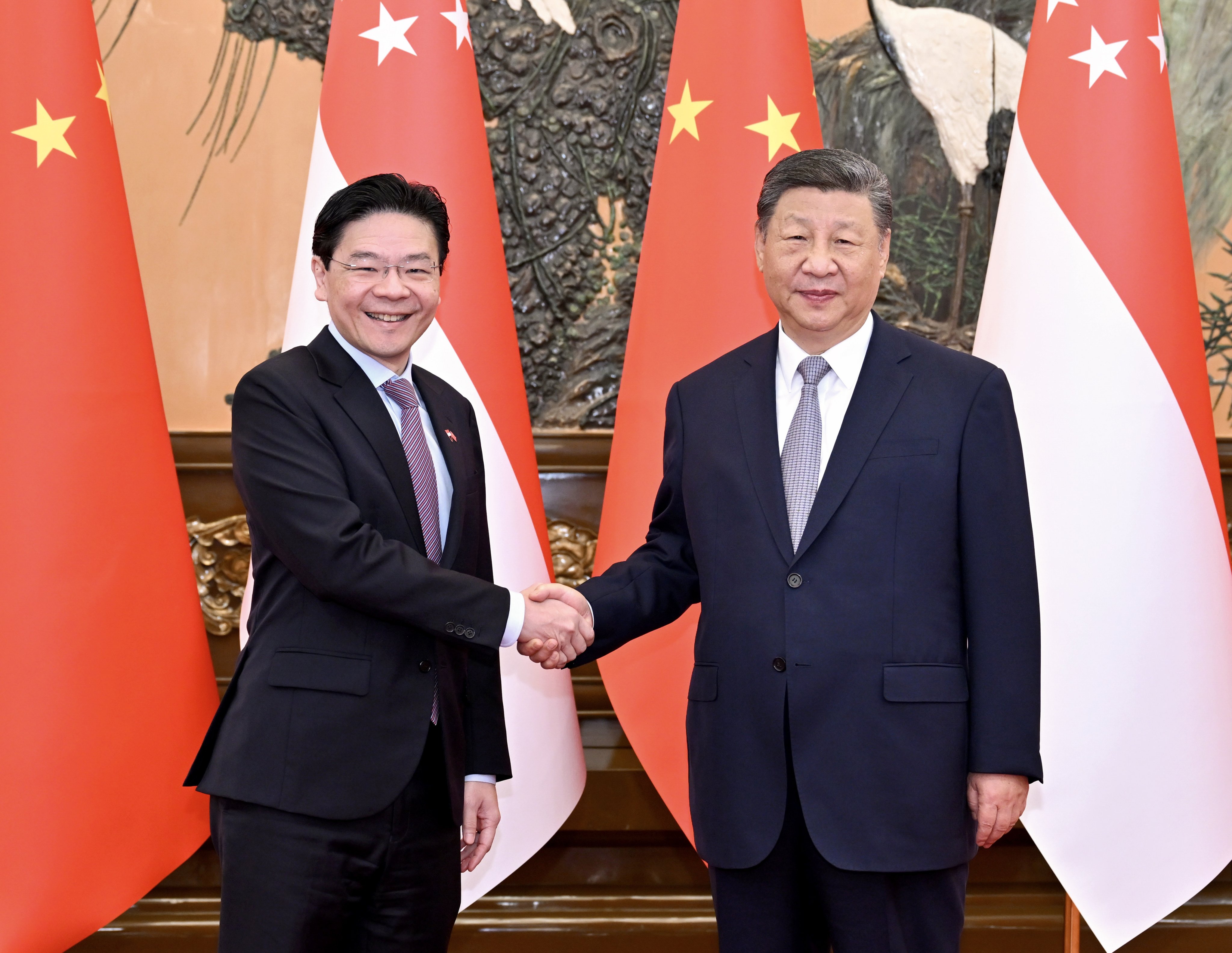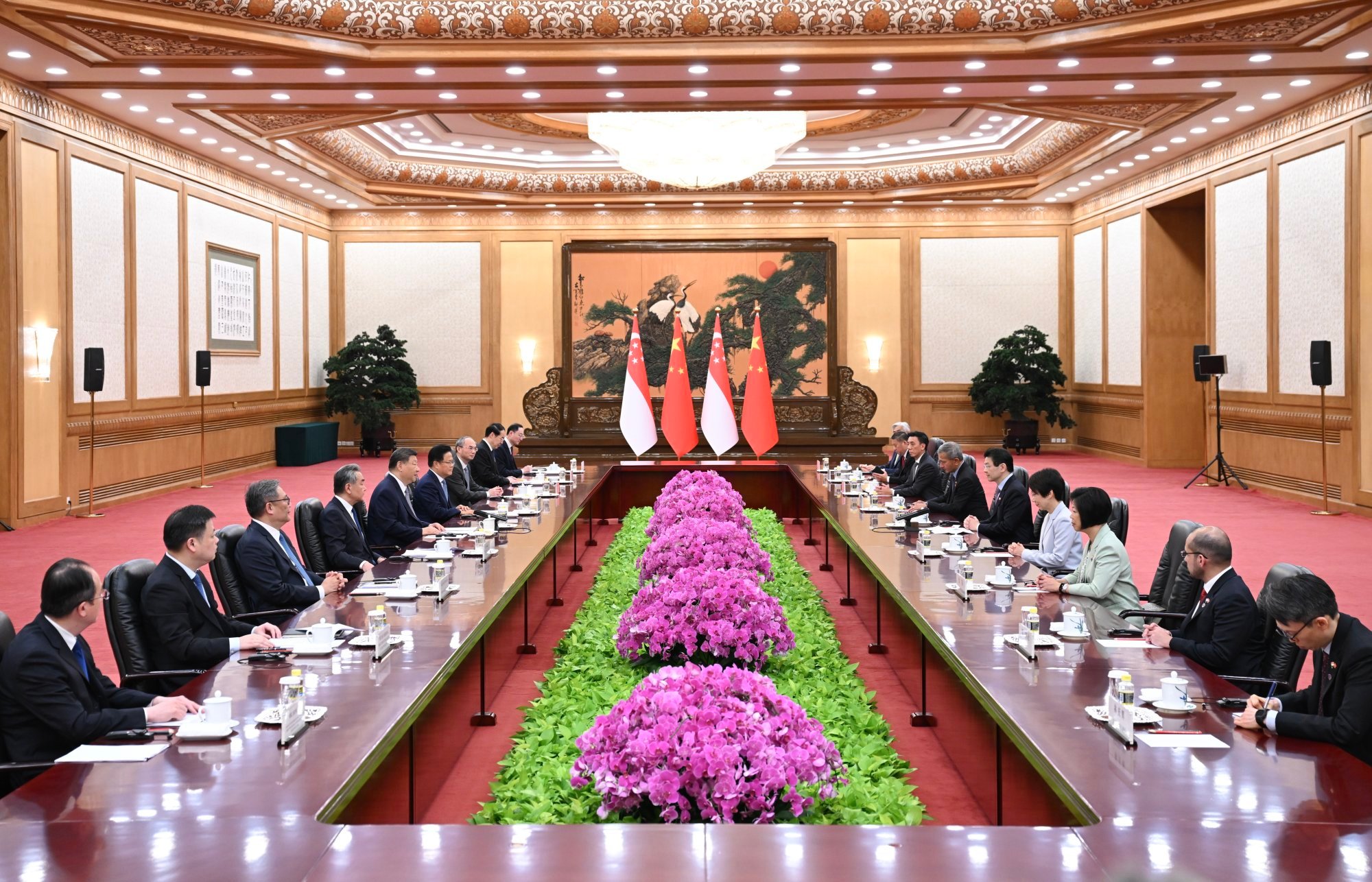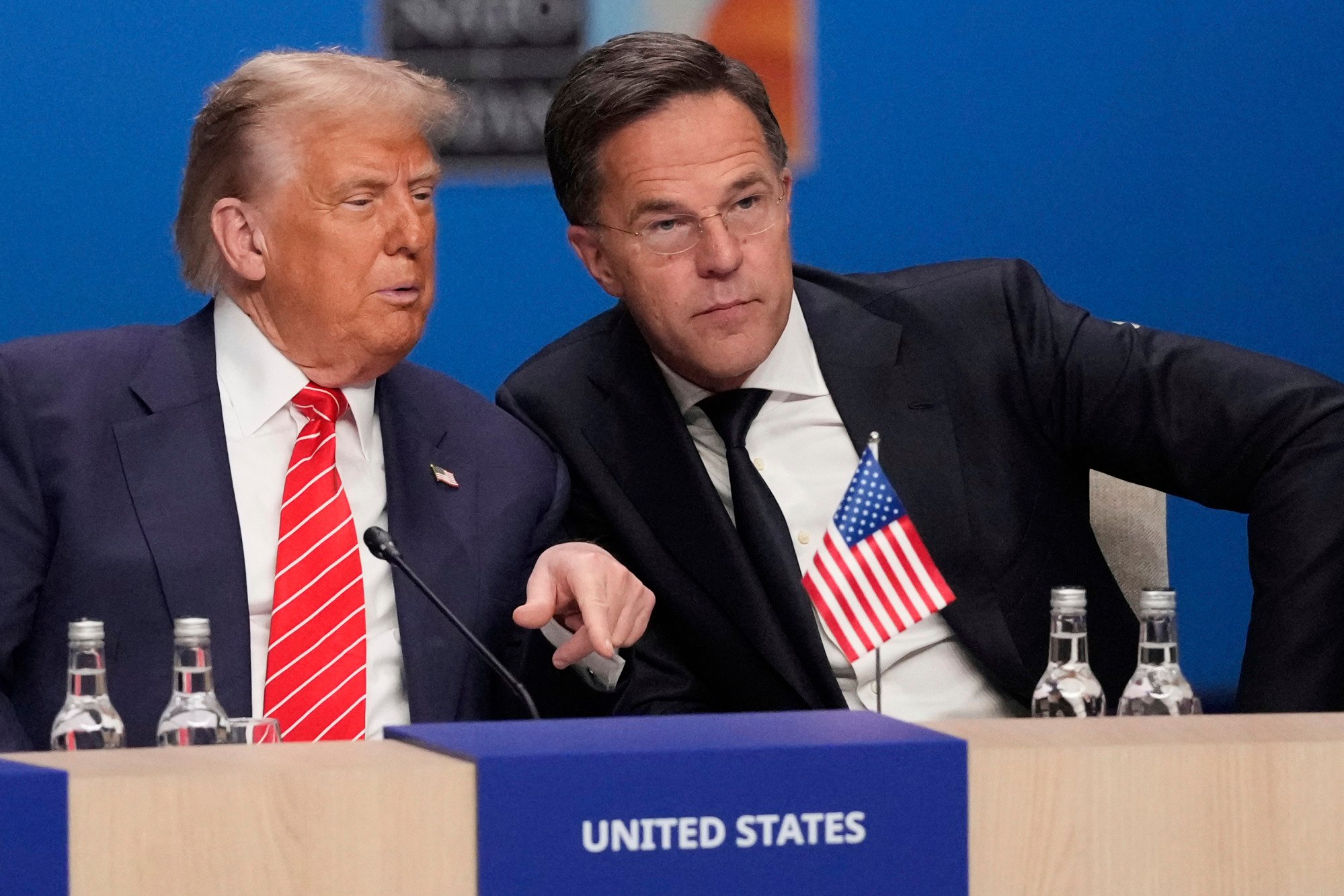In China, ‘bridge-builder’ Singapore champions a multilateral world
Prime Minister Lawrence Wong’s message reflects Asean’s efforts to reduce hostility and reinvest in international frameworks

A marquee visit by Singapore Prime Minister Lawrence Wong to China this week has underscored a push by Southeast Asian countries for multilateralism amid uncertainty over America’s commitment to the region and free trade.
Observers say Wong’s comments during his five-day trip, particularly at the World Economic Forum in Tianjin, or so-called Summer Davos, are aligned with the regional agenda of Asean members in recent years.
But even as Chinese President Xi Jinping called for his country and Singapore to “stand on the right side of history” and advocate for an equal multipolar world, analysts say it remains to be seen if Beijing will put its money where its mouth is.
Wong’s China visit marked his first such trip outside Southeast Asia since being sworn in as prime minister in May 2024. It also comes after the decisive win of his ruling party at the general election last month.
At their meeting on Tuesday, Xi in his comments to Wong echoed his message to other Asean leaders earlier this year to stand up against “unilateral bullying” and “tariff abuse” in reference to US President Donald Trump’s trade policies.
“Hearing that straight from the senior-most leadership in China is somewhat reassuring, but of course the proof is in the pudding,” said Chin-Hao Huang, associate professor of political science at the Lee Kuan Yew School of Public Policy at the National University of Singapore.
“To what extent is China going to live up to the expectations of being a responsible stakeholder, not only in the region but also in supporting or strengthening the existing multilateral system; a rules-based international system is something that Singapore believes very strongly in, especially with regard to trade and security,” Huang added.

Huang noted that Wong’s message to China was clear and consistent with what Asean, or the Association of Southeast Asian Nations, had been pushing for in recent years: to reduce hostility, focus on dialogue and diplomacy, and reinvest in the regional order and the multilateral system that enhanced pragmatic cooperation.
“This is even more important today as the US vacillates between underwriting the international system and scaling back to focus on domestic priorities and a more narrow, self-interested agenda based on America First,” he said.
In a similar vein, Benjamin Ho, assistant professor at the S. Rajaratnam School of International Studies, said Wong sought to impress upon the Chinese that it was in their interest to ensure the multilateral rules-based order was good for China too.
“Given the uncertainty of American commitment to the region, countries in the region, including China, have the responsibility to sort of ensure that the multilateral order doesn’t vanish or get totally wrecked,” Ho said.
Singapore as a ‘bridge-builder’
Wong’s trip came as Singapore and China are marking 35 years of diplomatic relations this year.
Chen Gang, deputy director of policy research and senior research fellow at the East Asian Institute in Singapore, noted that Wong’s visit saw commitments to deepen bilateral cooperation in emerging sectors such as the digital and green economies, artificial intelligence, and financial services.
“Singapore is playing an increasingly important role in China’s foreign trade and outbound investment, and China as the world’s second-largest economy is also vital for Singapore’s economic growth and prosperity,” Chen said.
He noted Singapore continued to maintain strong relations with other major powers, including the US, the European Union, India and Japan. “This balanced strategy also strengthens Singapore’s role as a bridge-builder.”

At a dialogue as part of the Summer Davos forum, Wong on Wednesday listed the World Trade Organization (WTO) as an example of a global institution that had come under pressure. There was “a feeling that the system is not working as well” and some of the rules had “lagged behind the realities of today’s economy, particularly in digital trade”, he noted.
As an example of various stakeholders updating and evolving the multilateral system, he said that Singapore worked with Japan and Australia on an initiative on e-commerce and five years later, more than 70 countries had agreed on the first set of rules for digital trading.
“It is painstaking work but there is no alternative. A new system does not just appear by magic. You have to work at it and with creative, pragmatic solutions, bringing along like-minded countries,” said Wong, calling this “flexible multilateralism”.
There was a desire among countries outside the West to have their own voices and preferences regarding the making of multilateral rules since the rules that worked post-World War II had become outdated, said Ho.
Huang agreed, noting that the global economic configuration was very different today with China as the second largest economy in the world and Asia and Southeast Asia not factoring prominently in making international institutions or taking part actively in them.
“On top of that is the key issue that the main architect of these international institutions, the United States, has begun to undermine the system in many ways, with unilateral tariffs and with pulling out of these institutions,” said Huang, who also wrote the book titled Power and Restraint in China’s Rise.
Reuters reported in March that the US paused funding for the WTO as the Trump administration ramped up efforts to cut government spending.

The China tilt?
While Wong reiterated that Singapore took a principled approach in its own national interests when it came to superpower rivalry between the US and China, an article in Foreign Affairs titled ‘Southeast Asia is Starting to Choose’, published on Tuesday, argued that countries in the region of nearly 700 million had been leaning towards China in recent decades.
Yuen Foong Khong, Li Ka Shing professor in political science at the Lee Kuan Yew School of Public Policy at the National University of Singapore, and Joseph Liow, dean of the college of humanities, arts, and social sciences at Nanyang Technological University, analysed the positions of 10 Southeast Asian countries on a welter of issues relating to China and the US and found that over the past 30 years, many of these countries “gradually but discernibly shifted away from the United States and toward China”.
“Southeast Asian countries may insist that they are staying above the fray, but their policies reveal otherwise. The region is drifting toward China, a fact that bodes ill for American ambitions in Asia,” Khong and Liow wrote.
While their findings revealed Indonesia, Malaysia, Singapore, and Thailand could be considered successful “hedgers”, other Asean countries were more closely aligned with a superpower. The Philippines was found to be clearly aligned with the United States, whereas Myanmar, Laos, Cambodia, Vietnam, and Brunei were all aligned with China.
Huang noted that Asean countries and China had signed trade deals, such as the Asean-China Free Trade Area and the Regional Comprehensive Economic Partnership, which covered a lowering of tariffs and increasing the ease of movement of people and goods across borders.
Meanwhile, the US, even before Trump’s second administration, had been facing increasing domestic pressure against free trade agreements such as the Trans-Pacific Partnership in 2016.
“For countries in Asia, it’s still about market access to the United States and wanting investment and exchange of goods with the US because it is still a very important economy. So I think there is a stark contrast between what China is able to provide and what the US has been doing,” Huang said.
“It behoves countries like Singapore to take a more forward-looking approach to try to find ways to enhance pragmatic cooperation with like-minded states and support a more nimble form of multilateralism,” he added.
“The messaging has been quite consistent in trying to engage China, along with other major powers keen to partner with Southeast Asia, to be part of this group of like-minded states that would enhance flexible multilateralism.”